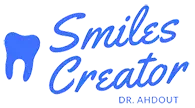An Emergency Dentist provides immediate dental care for patients who are experiencing an oral health issue. These dentists often have emergency appointments available throughout the week so that you can receive treatment if necessary.
Some of the most common types of dental emergencies include:
Swollen Gums and Jaw (Tooth Pain)
A sudden swell in your mouth, jaw, or cheek can signal an underlying problem that requires immediate attention. Swelling that doesn’t respond to over-the-counter treatments or medication may indicate an infection, a foreign body in your mouth, or an irritated lymph node. A swollen gum or jaw can also signal an issue that’s more serious than it seems, like an abscess or an infection of the nerves inside your mouth.
Bleeding Teeth and Gums
Bleeding teeth, especially if they won’t stop bleeding, are a sign of an underlying problem that needs to be addressed. You should see your dentist right away if you experience bleeding that is not controlled by over-the-counter treatments or medication.
Exposed Nerves
If you’re feeling a sharp, stabbing pain in your face or mouth that won’t go away, you may have exposed nerves. This can be painful and cause you to feel numb. It’s best to visit your emergency dentist as soon as you notice the problem so that the source of the pain can be determined and treated.
Broken Teeth
Biting hard objects, such as ice and pencils, can chip or break your teeth. The pain associated with a broken tooth is not only unpleasant, but it can make eating and speaking difficult. A broken tooth needs to be attended to immediately so that the damage can be minimized.
Soft Tissues in the Mouth
The lips, gums, and interior of the cheeks are some of the most important soft tissue in your mouth. They can be injured in a variety of ways, such as a fall or a blow to the face. You should rinse the soft tissues with a mild solution of warm water and apply ice on the area to reduce swelling and pain.
Loose Teeth
A loose tooth can be caused by a number of things, including aging, bone loss in the jaw, or prior tooth loss. A loose tooth can be a sign of an underlying problem, such as a cracked tooth or decay, and may require an urgent dental visit to prevent further damage to the tooth.
Your Tastes Metallic
If your taste is metallic, this could be an indication that a filling has fractured or fallen out. A broken or lost filling is an emergency because bacteria can quickly form and cause an infection.
Pores in Your Tooth
If you have pores in your tooth that are causing pain, your emergency dentist may be able to treat them with a de-sensitizer treatment. This treatment helps seal the pores in your tooth, preventing cold air from entering into them and causing discomfort.
There are several ways to find an emergency dentist near you, and many of them are easier than you might think. One of the most simple ways is to check with your insurance company’s website for an in-network dentist. Other options include calling a dental hotline or visiting a walk-in clinic.
Dental Emergency Procedures to See an Emergency Dentist
